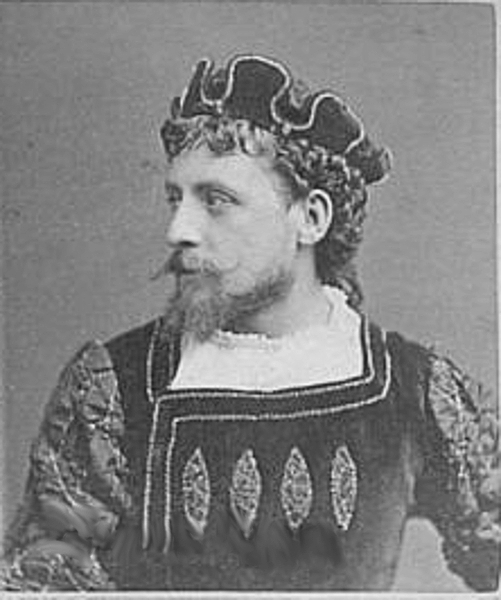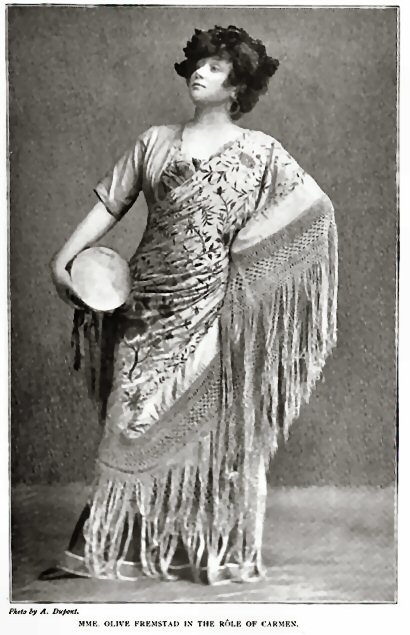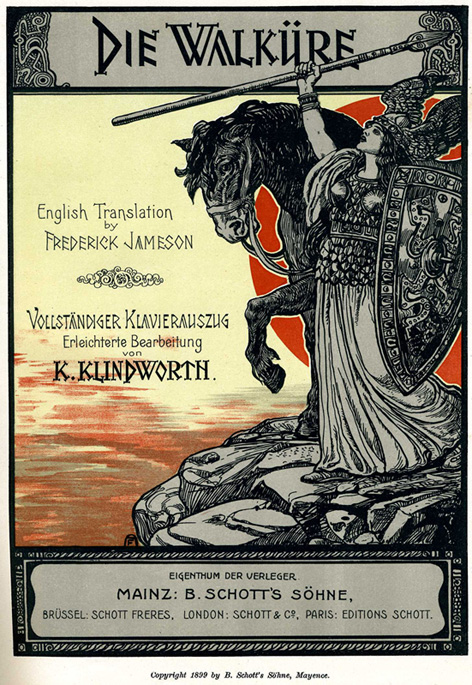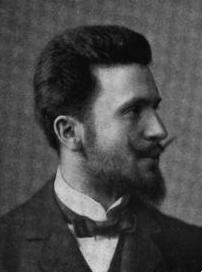|
Sara Cahier
Sara Charles-Cahier or Madame Charles Cahier (born Sara Layton Walker; 8 January 187015 April 1951) was an American-born Swedish mezzo-soprano or contralto singer in opera and lieder, singing primarily in Europe. The American-born Cahier later acquired Swedish citizenship. She was associated with Gustav Mahler, and was one of the soloists in the posthumous premiere of his ''Das Lied von der Erde'' in 1911. She sang at the Metropolitan Opera in New York, and was a teacher at the Curtis Institute of Music in Philadelphia. Her students included Marian Anderson. Career She was born as Sara Layton Walker in Nashville, Tennessee."Mme. Sara Cahier" '''', ... [...More Info...] [...Related Items...] OR: [Wikipedia] [Google] [Baidu] |
Victor Capoul
Joseph Victor Amédée Capoul (27 February 1839 – 18 February 1924) was a French operatic lyric tenor with a graceful singing style. Forbes E., Steane J.B., "Victor Capoul". In: ''The New Grove Dictionary of Opera.'' Macmillan, London and New York, 1997. Early life Capoul was born in Toulouse on 27 February 1839. Career Victor Capoul began his studies in Toulouse. He was admitted to the Conservatoire de Paris in 1859, where, as a pupil of Révial (singing) and Mocker ( opéra comique), he won a first prize for the latter in 1861. He was engaged at the Opéra-Comique the same year and made his debut on 26 August as Daniel in Adolphe Adam's ''Le Chalet''. He sang other roles in the repertoire such as in ''La fille du régiment'', '' La part du diable'', ''La dame blanche'', ''Le pré aux clercs'' and ''L'étoile du nord'', until leaving in 1870. He also created the roles of Renaud in Lefébure-Wély's 1861 opera ''Les Recruteurs'', Eustache in ''Les Absents'' by Ferdinand ... [...More Info...] [...Related Items...] OR: [Wikipedia] [Google] [Baidu] |
Olive Fremstad
Olive Fremstad (14 March 1871 – 21 April 1951) was the stage name of Anna Olivia Rundquist, a celebrated Swedish-American opera diva who sang in both the mezzo-soprano and soprano ranges.Rosenthal and Warrack (1979) p. 180 Background Born in Stockholm, she received her early education and musical training in Christiania, Norway. When she was 12 years of age her parents moved to America, settling in Minneapolis, Minnesota. Even before leaving Christiania, her progress on the piano had been such that she had appeared as an infant prodigy. She was adopted by an American couple living in Minnesota, taking on their surname of Fremstad. She began her vocal training in New York City with Frederick Bristol in 1890 after singing in church choirs, then studied in Berlin with Lilli Lehmann before making her operatic debut as a mezzo-soprano as Azucena in Verdi's ''Il trovatore'' at the Cologne Opera in 1895. She remained there for at least three years, before going on to Vienna, Mu ... [...More Info...] [...Related Items...] OR: [Wikipedia] [Google] [Baidu] |
Die Walküre
(; ''The Valkyrie''), WWV 86B, is the second of the four music dramas that constitute Richard Wagner's ''Der Ring des Nibelungen'' (English: ''The Ring of the Nibelung''). It was performed, as a single opera, at the National Theatre Munich on 26 June 1870, and received its first performance as part of the ''Ring'' cycle at the Bayreuth Festspielhaus on 14 August 1876. As the ''Ring'' cycle was conceived by Wagner in reverse order of performance, ''Die Walküre'' was the third of the four texts to be written, although Wagner composed the music in performance sequence. The text was completed by July 1852, and the music by March 1856. Wagner largely followed the principles related to the form of musical drama, which he had set out in his 1851 essay ''Opera and Drama'' under which the music would interpret the text emotionally, reflecting the feelings and moods behind the work, using a system of recurring leitmotifs to represent people, ideas, and situations rather than the conv ... [...More Info...] [...Related Items...] OR: [Wikipedia] [Google] [Baidu] |
Il Trovatore
''Il trovatore'' ('The Troubadour') is an opera in four acts by Giuseppe Verdi to an Italian libretto largely written by Salvadore Cammarano, based on the play ''El trovador'' (1836) by Antonio García Gutiérrez. It was García Gutiérrez's most successful play, one which Verdi scholar Julian Budden describes as "a high flown, sprawling melodrama flamboyantly defiant of the Aristotelian unities, packed with all manner of fantastic and bizarre incident." The premiere took place at the Teatro Apollo in Rome on 19 January 1853, where it "began a victorious march throughout the operatic world," a success due to Verdi's work over the previous three years. It began with his January 1850 approach to Cammarano with the idea of ''Il trovatore''. There followed, slowly and with interruptions, the preparation of the libretto, first by Cammarano until his death in mid-1852 and then with the young librettist Leone Emanuele Bardare, which gave the composer the opportunity to propose signifi ... [...More Info...] [...Related Items...] OR: [Wikipedia] [Google] [Baidu] |
Richard Strauss
Richard Georg Strauss (; 11 June 1864 – 8 September 1949) was a German composer, conductor, pianist, and violinist. Considered a leading composer of the late Romantic and early modern eras, he has been described as a successor of Richard Wagner and Franz Liszt. Along with Gustav Mahler, he represents the late flowering of German Romanticism, in which pioneering subtleties of orchestration are combined with an advanced harmonic style. Strauss's compositional output began in 1870 when he was just six years old and lasted until his death nearly eighty years later. While his output of works encompasses nearly every type of classical compositional form, Strauss achieved his greatest success with tone poems and operas. His first tone poem to achieve wide acclaim was ''Don Juan'', and this was followed by other lauded works of this kind, including ''Death and Transfiguration'', ''Till Eulenspiegel's Merry Pranks'', ''Also sprach Zarathustra'', ''Don Quixote'', ''Ein Heldenleben' ... [...More Info...] [...Related Items...] OR: [Wikipedia] [Google] [Baidu] |
Edvard Grieg
Edvard Hagerup Grieg ( , ; 15 June 18434 September 1907) was a Norwegian composer and pianist. He is widely considered one of the foremost Romantic era composers, and his music is part of the standard classical repertoire worldwide. His use of Norwegian folk music in his own compositions brought the music of Norway to fame, as well as helping to develop a national identity, much as Jean Sibelius did in Finland and Bedřich Smetana in Bohemia. Grieg is the most celebrated person from the city of Bergen, with numerous statues which depict his image, and many cultural entities named after him: the city's largest concert building (Grieg Hall), its most advanced music school (Grieg Academy) and its professional choir (Edvard Grieg Kor). The Edvard Grieg Museum at Grieg's former home Troldhaugen is dedicated to his legacy. Background Edvard Hagerup Grieg was born in Bergen, Norway (then part of Sweden–Norway). His parents were Alexander Grieg (1806–1875), a merchant and the B ... [...More Info...] [...Related Items...] OR: [Wikipedia] [Google] [Baidu] |
Artur Bodanzky
Artur Bodanzky (also written as Artur Bodzansky) (16 December 1877 – 23 November 1939) was an Austrian-American conductor particularly associated with the operas of Wagner. He conducted Enrico Caruso's last performance at the Metropolitan Opera House on Christmas Eve 1920. The son of Jewish merchants, Bodanzky studied the violin and composition with Alexander Zemlinsky Bodanzky then became conducting assistant to Gustav Mahler in Vienna, later going on to jobs in Berlin, the Neues Deutsches Theater in Prague (August 1907), where he was briefly a colleague of Otto Klemperer and Mannheim. In 1915 he emigrated to the United States to work for the Metropolitan Opera, being replaced at Mannheim by Wilhelm Furtwängler. He was head of German repertory at the Met, being accepted by Arturo Toscanini on the recommendation of Ferruccio Busoni. In 1921 he was engaged by the New York Philharmonic as a guest conductor. In 1928, Bodanzky announced his resignation from the Met and was repl ... [...More Info...] [...Related Items...] OR: [Wikipedia] [Google] [Baidu] |
Orville Harrold
Orville Harrold (17 November 1877 – 23 October 1933) was an American operatic tenor and musical theatre actor. He began his career in 1906 as a performer in operettas in New York City, and was also seen during his early career in cabaret, musical theatre, and vaudeville performances. With the aid of Oscar Hammerstein I, he branched out into opera in 1910 as a leading tenor with Hammerstein's opera houses in New York City and Philadelphia. While his career from this point on primarily consisted of opera performances, he periodically returned to operetta and musical theatre throughout his career. He notably created the role of Captain Dick Warrington in the world premiere of Victor Herbert's operetta '' Naughty Marietta'' in November 1910. As an opera singer, Harrold specialized in the lyric tenor repertoire of the Italian and French languages. In 1911–1912 he performed with Hammerstein's opera house in London. From 1912 to 1922 he was one of the leading opera tenors in ... [...More Info...] [...Related Items...] OR: [Wikipedia] [Google] [Baidu] |
Bruno Walter
Bruno Walter (born Bruno Schlesinger, September 15, 1876February 17, 1962) was a German-born conductor, pianist and composer. Born in Berlin, he escaped Nazi Germany in 1933, was naturalised as a French citizen in 1938, and settled in the United States in 1939. He worked closely with Gustav Mahler, whose music he helped to establish in the repertory, held major positions with the Leipzig Gewandhaus Orchestra, New York Philharmonic, Concertgebouw Orchestra, Salzburg Festival, Vienna State Opera, Bavarian State Opera, Staatsoper Unter den Linden and Deutsche Oper Berlin, among others, made recordings of historical and artistic significance, and is widely considered to be one of the great conductors of the 20th century. Biography Early life Born near Alexanderplatz in Berlin to a middle-class Jewish family, he began his musical education at the Stern Conservatory at the age of eight, making his first public appearance as a pianist when he was nine; he performed a concer ... [...More Info...] [...Related Items...] OR: [Wikipedia] [Google] [Baidu] |
Cavalleria Rusticana
''Cavalleria rusticana'' (; Italian for "rustic chivalry") is an opera in one act by Pietro Mascagni to an Italian libretto by Giovanni Targioni-Tozzetti and Guido Menasci, adapted from an 1880 short story of the same name and subsequent play by Giovanni Verga. Considered one of the classic ''verismo'' operas, it premiered on 17 May 1890 at the Teatro Costanzi in Rome. Since 1893, it has often been performed in a so-called ''Cav/Pag'' double-bill with ''Pagliacci'' by Ruggero Leoncavallo. Composition history In July 1888 the Milanese music publisher Edoardo Sonzogno announced a competition open to all young Italian composers who had not yet had an opera performed on stage. They were invited to submit a one-act opera which would be judged by a jury of five prominent Italian critics and composers. The best three would be staged in Rome at Sonzogno's expense. Mascagni heard about the competition only two months before the closing date and asked his friend Giovanni Targioni-Tozze ... [...More Info...] [...Related Items...] OR: [Wikipedia] [Google] [Baidu] |
Samson And Delilah (opera)
''Samson and Delilah'' (french: Samson et Dalila, links=no), Op. 47, is a grand opera in three acts and four scenes by Camille Saint-Saëns to a French libretto by Ferdinand Lemaire. It was first performed in Weimar at the (Grand Ducal) Theater (now the Staatskapelle Weimar) on 2 December 1877 in a German translation. The opera is based on the Biblical tale of Samson and Delilah found in Chapter 16 of the Book of Judges in the Old Testament. It is the only opera by Saint-Saëns that is regularly performed. The second act love scene in Delilah's tent is one of the set pieces that define French opera. Two of Delilah's arias are particularly well known: "" ("Spring begins") and "" ("My heart opens itself to your voice", also known as "Softly awakes my heart"), the latter of which is one of the most popular recital pieces in the mezzo-soprano/contralto repertoire. Composition history In the middle of the 19th century, a revival of interest in choral music swept France, and Saint ... [...More Info...] [...Related Items...] OR: [Wikipedia] [Google] [Baidu] |
_-_helfigur_med_signatur_-_AF.jpg)










